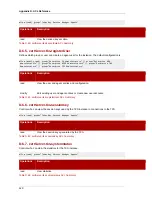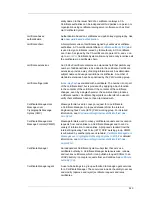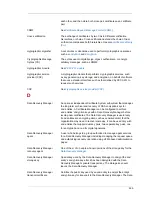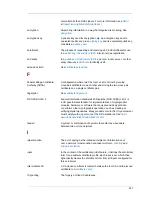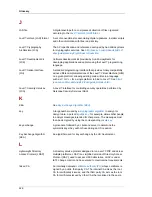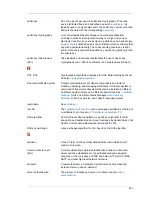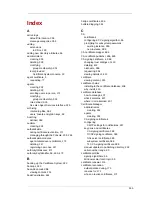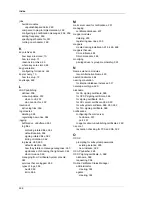
Glossary
532
server SSL certificate
A certificate used to identify a server to a client using the
Secure
Sockets Layer (SSL)
protocol.
servlet
Java
™
code that handles a particular kind of interaction with end
entities on behalf of a Certificate System subsystem. For example,
certificate enrollment, revocation, and key recovery requests are each
handled by separate servlets.
SHA-1
Secure Hash Algorithm, a hash function used by the US government.
signature algorithm
A cryptographic algorithm used to create digital signatures. Certificate
System supports the MD5 and
SHA-1
signing algorithms. See also
cryptographic algorithm
,
digital signature
.
signed audit log
See
audit log
.
signing certificate
A certificate that's public key corresponds to a private key used to
create digital signatures. For example, a Certificate Manager must
have a signing certificate that's public key corresponds to the private
key it uses to sign the certificates it issues.
signing key
A private key used for signing only. A signing key and its equivalent
public key, plus an
encryption key
and its equivalent public key,
constitute a
dual key pair
.
single sign-on
1. In Certificate System, a password that simplifies the way to sign
on to Red Hat Certificate System by storing the passwords for
the internal database and tokens. Each time a user logs on, he is
required to enter this single password.
2. The ability for a user to log in once to a single computer and be
authenticated automatically by a variety of servers within a network.
Partial single sign-on solutions can take many forms, including
mechanisms for automatically tracking passwords used with different
servers. Certificates support single sign-on within a
public-key
infrastructure (PKI)
. A user can log in once to a local client's private-
key database and, as long as the client software is running, rely
on
certificate-based authentication
to access each server within an
organization that the user is allowed to access.
slot
The portion of a
PKCS #11 module
, implemented in either hardware
or software, that contains a
token
.
smart card
A small device that contains a microprocessor and stores
cryptographic information, such as keys and certificates, and
performs cryptographic operations. Smart cards implement some or
all of the
PKCS #11
interface.
spoofing
Pretending to be someone else. For example, a person can pretend
to have the email address
jdoe@example.com
, or a computer
can identify itself as a site called
www.redhat.com
when it is not.
Spoofing is one form of
impersonation
. See also
misrepresentation
.
SSL
See
Secure Sockets Layer (SSL)
.
Summary of Contents for CERTIFICATE SYSTEM 8.0 - ADMINISTRATION
Page 42: ...20 ...
Page 43: ...Part I Setting up Certificate Services ...
Page 44: ......
Page 190: ...168 ...
Page 208: ...186 ...
Page 223: ...Part II Additional Configuration to Manage CA Services ...
Page 224: ......
Page 256: ...234 ...
Page 270: ...248 ...
Page 280: ...258 ...
Page 292: ...270 ...
Page 293: ...Part III Managing the Subsystem Instances ...
Page 294: ......
Page 408: ...386 ...
Page 438: ...416 ...
Page 439: ...Part IV References ...
Page 440: ......
Page 503: ...Netscape Defined Certificate Extensions Reference 481 OID 2 16 840 1 113730 13 ...
Page 504: ...482 ...
Page 556: ...534 ...
Page 564: ...542 ...



